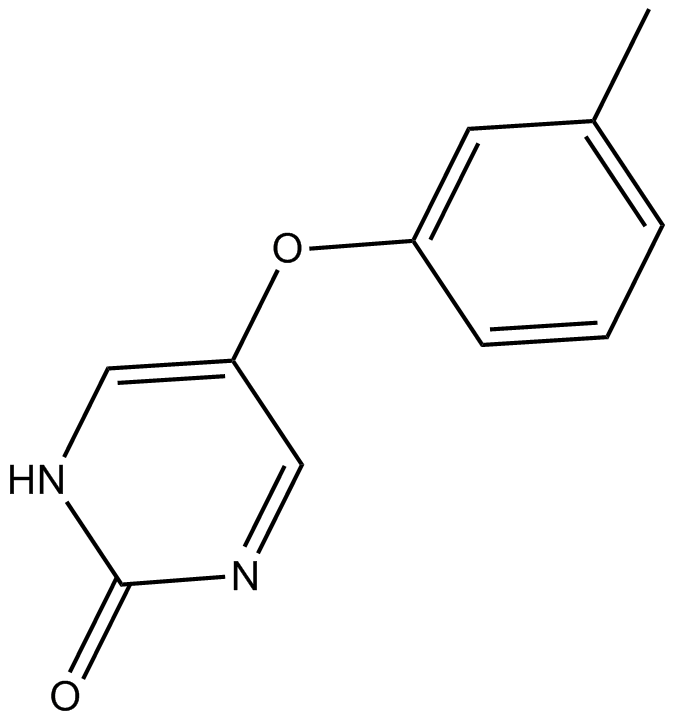MLR 1023 (Synonyms: CP 26,154, NSC 314335) |
| カタログ番号GC10775 |
MLR 1023 は、63 nM の EC50 を持つ、Lyn キナーゼの強力かつ選択的なアロステリック活性化因子です。
Products are for research use only. Not for human use. We do not sell to patients.

Cas No.: 41964-07-2
Sample solution is provided at 25 µL, 10mM.
Tolimidone is a potent and selective allosteric activator of Lyn kinase with an EC50 of 63 nM.
Incubation of Tolimidone (MLR-1023) with Lyn kinase elicits a repeatable 50% increase in enzyme activity. Tolimidone elicits a concentration-dependent increase in Lyn kinase activation with a 2.3- and 2.1-fold increase achieved at concentrations of 3 and 10 μM, respectively. Inclusion of Tolimidone (100 μM) increases Lyn kinase activity by 3-fold at each ATP concentration tested (Vmax=2601 U/mg). Tolimidone-mediated activation of Lyn kinase increases in proportion to the length of preincubation period in the absence of ATP[1].
Administration of Tolimidone (MLR-1023) (30 mg/kg i.p.) significantly (p<0.05) lowers blood glucose levels to 148 and 158 mg/dL, 30 and 90 min after administration, respectively. Tolimidone significantly increases adipocyte differentiation and adiponectin production by 3.7- and 19-fold, respectively[1]. Tolimidone elicits a dose-dependent potentiation of the insulin response, with a maximal effect observed with a dose level of 30 mg/kg[2].
Reference:
[1]. Saporito MS, et al. MLR-1023 is a potent and selective allosteric activator of Lyn kinase in vitro that improves glucose tolerance in vivo. J Pharmacol Exp Ther. 2012 Jul;342(1):15-22.
[2]. Ochman AR, et al. The Lyn kinase activator MLR-1023 is a novel insulin receptor potentiator that elicits a rapid-onset and durable improvement in glucose homeostasis in animal models of type 2 diabetes. J Pharmacol Exp Ther. 2012 Jul;342(1):23-32.
Average Rating: 5 (Based on Reviews and 39 reference(s) in Google Scholar.)
GLPBIO products are for RESEARCH USE ONLY. Please make sure your review or question is research based.
Required fields are marked with *




















